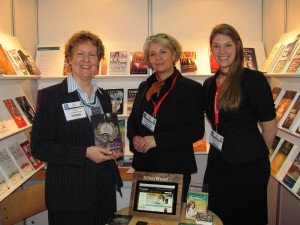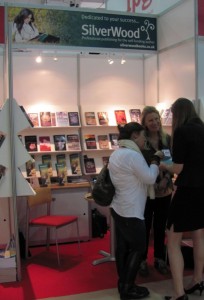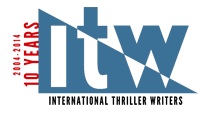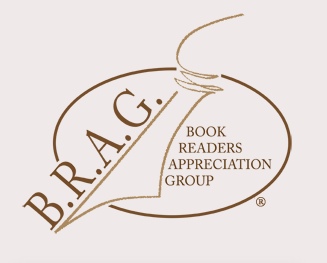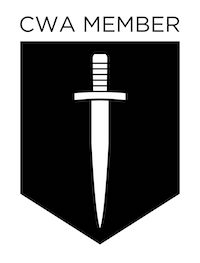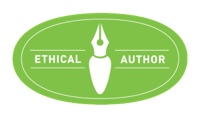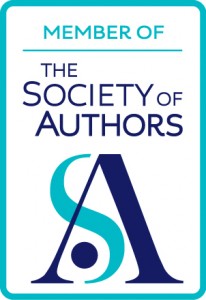 Today, I’m welcoming a special guest to my blog. Carol McGrath writes historical fiction and has recently achieved her MPhil in Creative Writing from the Royal Holloway University, London. Hearty congratulations! A member of the Romantic Novelists’ Association New Writers’ Scheme with me, Carol has graduated to full membership on the publication of her debut novel The Handfasted Wife. I can’t wait to read it!
Today, I’m welcoming a special guest to my blog. Carol McGrath writes historical fiction and has recently achieved her MPhil in Creative Writing from the Royal Holloway University, London. Hearty congratulations! A member of the Romantic Novelists’ Association New Writers’ Scheme with me, Carol has graduated to full membership on the publication of her debut novel The Handfasted Wife. I can’t wait to read it!
Welcome, Carol. So tell us, how did you get started ?
As a child I made little books, mostly Famous Five stories which I exchanged with a friend by post during the long summer holidays. They were my favourite adventure stories. Later, I was the teenager who had to stand up and read out extracts from her stories when inspectors visited my girls’ school in Northern Ireland. It was many years later when I was a mother of a young family and teaching part-time that I went on an Oxford Continuing Education weekly course in Creative Writing. I was off.
Even though I was teaching full time I took the Oxford Diploma in creative writing, a two year course that was assessed and covered prose, poetry and playwriting. After that it was the MA at Queen’s University Belfast (QUB), The Seamus Heaney Centre, followed by an MPhil in Creative Writing at The Royal Holloway University of London. There are many routes into writing. Courses are about writing, not being published. They can help you structure and fine tune writing although you must choose them with caution. For me, they provided discipline, confidence and a variety of writing experiences which helped me to develop my voice and edit my work.
What drew you to your genre ?
As a teenager I loved historical novels and often read factual books also. My first serious factual historical book was C.V. Wedgwood’s The Trial of Charles I which my father gave me when I was fourteen. I studied history on my first degree at QUB, specialising in the medieval period. Later, I taught history at high school level, even for a time running a history department. I was always drawn to the fact that women have been marginalised in history. It is interesting and important to unearth their stories. However, in time I may write a contemporary novel, probably a woman’s novel.
What inspired you to write Edith Swan-Neck’s story?
I first encountered this story on a visit to see The Bayeux Tapestry in Bayeux in Normandy when I was chairlady of our French Twinning Society. The video supporting the exhibition suggested that Edith Swan-Neck identified her husband’s body on the battlefield near Hastings by marks only known to her. The vignette of the burning house on the tapestry fascinated me. Later, I found that tapestry historians such as Andrew Bridgeford have suggested that this vignette may depict Elditha fleeing from the ‘house that burned’ with her young son Ulf. A little more research in Oxford’s Bodleian Library and I discovered that Ulf had been taken as a hostage into Normandy after 1066. I was hooked. These three historical facts along with the recorded fact that Harold’s mother Gytha was besieged in Exeter by William in 1068 made me even more curious about these women. How did these three royal women of Hastings survive 1066? What happened next? What might their personalities, their character have been? I wrote the story from Edith Swan-Neck’s point of view and it became her story.
 What are the sources for Edith’s life? And how have you used them?
What are the sources for Edith’s life? And how have you used them?
The sources for Edith Swan-Neck, Elditha’s life, are sparse. Women, even royal women, are marginalised in historical accounts. It is written in The Anglo-Saxon Chronicles that Harold married the sister of the Northern Earls in 1066. This meant he had set aside his common-law, handfasted wife to do so. Elditha as Edith Swan-Neck, appears in The Waltham Chronicle written in the early 12th century which records that she recognised her husband’s body on the battlefield. Frank Barlow’s The Godwins was a valuable source of information as he consolidated extensive research and wrote about Elditha’s children with Harold. Henrietta Leyser’s highly respected book, Medieval Women, was an invaluable secondary source.
I read primary sources extensively, importantly the Carmen de Proelio de Hastingae and William of Poitiers’ biography of King William. Both are 11th century sources written within a decade of the battle. The first refers to Harold’s mother Gytha and the second to his sister Edith, the wife of Edward the Confessor. The Siege of Exeter is recorded in Oderic Vitalis’s writings of the early 12th century. Edith Swan-Neck is generally considered to be Edith the Fair and Edith the Rich mentioned in the Domesday Book as a landowner in 1066. May of her lands became the property of Count Alan of Brittany by 1086.
The Bayeux Tapestry is an invaluable resource so I studied it, embroidery in general and daily life in the eleventh century in depth. Now I own an extensive library of fabulous books concerning this period! However, whilst trying to remain faithful to fact where it exists and to the mores of the times I nonetheless speculated to fill in the spaces history has provided by its absence, the lack of facts. Important to this story’s narrative, it is known that William married heiresses to his knights. These were women dispossessed, widows and daughters who had lost husbands and fathers. He liked to establish the cloak of legitimacy around his land grab. I integrated this into the novel. I do not claim everything I wrote to be true. I am writing fiction, not biography, and these women lived a very long time ago. Yet, I do speculate with authority.
Are you a planner or plotter?
I’m a planner. Often I get a sense of my historical character by writing snippets using dialogue and first person. Then I write a little way into the book. I stop after the first few sections, maybe thirty to fifty pages, plan it and I am flexible as I write, too. The plan did change as I wrote this novel but I was really glad to have an idea of events, the narrative order and where it ended. The knowing where a story finishes, is, I believe, very important for its overall structure.
What is the hardest part of the writing process for you?
The most difficult part of writing is distancing oneself enough to see how a reader might see the novel. The drafts that follow the first write can be demanding. ‘Destroy the babies if it helps the narrative!’ True. ‘Make her or him suffer!’ True. A book is a character’s journey and a reader’s adventure.
Which authors have influenced you?
I loved Anna Seton’s Katherine and it is a big influence on my historical fiction. I recently read Sir Walter Scott who is fabulous on developing characters. I love Hilary Mantel and Tracy Chevalier. Recently I discovered Vanora Bennet. I do enjoy her novels.
How do you relax? What interests do you have other than writing?
To relax I spend time with my family, garden and read. I am an obsessive reader and I travel the world too.
Are you into social networking, and in what way do you feel it helps your career?
It is a valuable way to reach out to others and share information with other writers in your genre. It is quid pro quo but very valuable and rewarding.
Can you tell us something of your work in progress?
This is about King Harold’s daughter Gunnhild who features in The Handfasted Wife. She eloped from Wilton Abbey circa 1076 with a Norman knight although some sources take the date as being 1090. I have chosen the earlier date.
And finally, what advice would you give a new writer?
Persevere, enjoy writing, forget about trends, write from the heart and learn from others. Join the RNA New Writers’ Scheme if your work contains an element of romance. Otherwise, look at getting critique from a company that does this well. Academic courses may have helped me hone my writing but the RNA critiques and another from the commercial world helped me to rework my manuscript into a novel worth reading.
Thank you, Carol, for taking the time to give us a fascinating insight to the enigmatic Edith Swan-Neck.
The Handfasted Wife is available for all e-readers and from Accent Press and Amazon Books as a paperback.
Carol’s links:
Twitter: @carolmcgrath
Blog: Scribbling in the Margins



